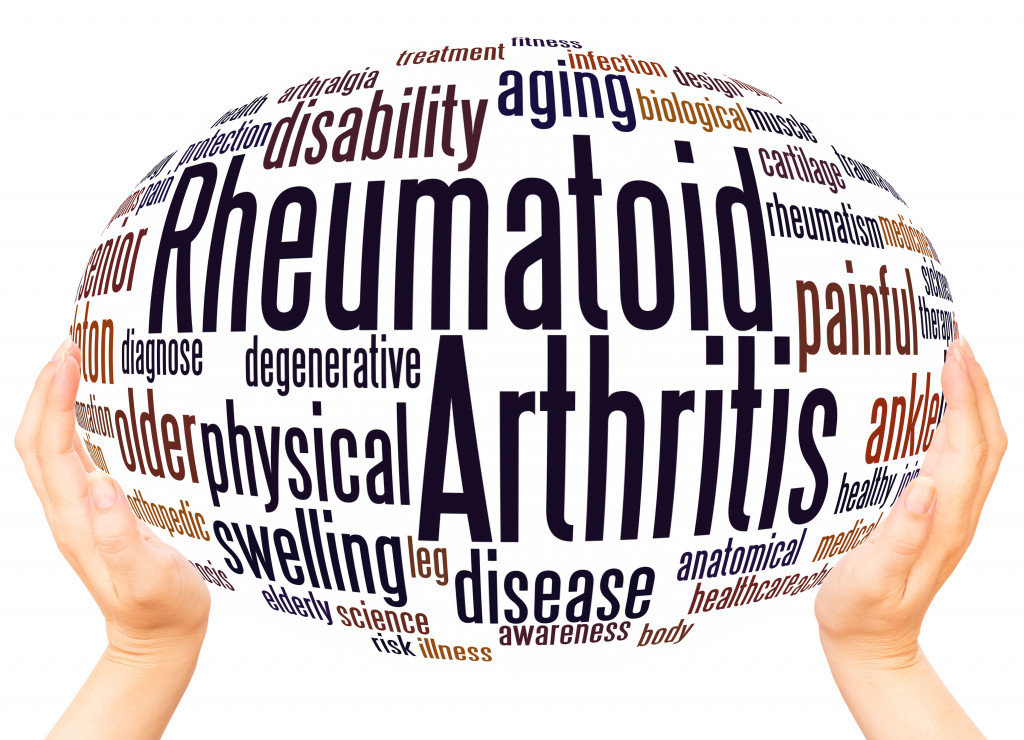- Regular exercise can help improve joint mobility and reduce pain.
- Eating a healthy diet with plenty of omega-3s, fruits and vegetables can reduce inflammation.
- Stress management techniques can help reduce levels and manage your symptoms.
- Medications, including corticosteroids, NSAIDs, DMARDs, biologics, or joint replacement surgery, can help manage symptoms.
If you have been diagnosed with rheumatoid arthritis (RA), you know it can be a painful and debilitating condition affecting your daily life. Fortunately, there are steps you can take to manage your symptoms and improve your quality of life. Here are five tips for dealing with and managing RA.
1. Stay Active
Regular exercise is crucial for managing RA symptoms. It can help improve joint mobility, reduce pain, and increase energy levels. Low-impact exercises such as swimming, cycling, or walking are recommended, as they are easier on the joints. Additionally, stretching and strengthening exercises can help improve flexibility and build muscle to support the joints. Always consult with your healthcare provider before starting any new exercise program.
2. Follow a Healthy Diet

Maintaining a healthy diet can help manage RA symptoms. Foods rich in omega-3 fatty acids, such as salmon and walnuts, can help reduce inflammation. Avoiding processed foods, red meat, and sugar can also help manage inflammation and improve overall health. Additionally, staying hydrated can help lubricate the joints and reduce stiffness.
Eating a diet rich in fresh fruits and vegetables can provide essential vitamins, minerals, and antioxidants that benefit those with RA. Leafy greens such as kale, spinach, and collards are especially good sources of vitamins A, C, and K. Other important nutrients like zinc, magnesium, selenium, and iron can be found in nuts, seeds, and other whole grains. Eating a variety of colorful produce and adding legumes to the diet can provide an abundance of essential vitamins and minerals to help fight inflammation.
3. Manage Stress
Stress can trigger RA flares and worsen symptoms. Learning stress management techniques like meditation or deep breathing can help reduce stress levels and manage symptoms. Additionally, seeking support from family, friends, or a mental health professional can help you manage the emotional impact of RA.
4. Take Medications as Prescribed
Various medications are available to manage RA symptoms, including nonsteroidal anti-inflammatory drugs (NSAIDs), disease-modifying antirheumatic drugs (DMARDs), and biologic agents. Taking these medications as your healthcare provider prescribes to manage symptoms and prevent joint damage is important.
Here are the medications that may be prescribed for you in detail:
Corticosteroids
Corticosteroids are powerful anti-inflammatory medications that can help reduce pain, swelling, and joint stiffness. Your healthcare provider may prescribe these be taken orally or as an injection into a joint. Side effects of corticosteroids include an increased risk of infection, weight gain, and diabetes.
Nonsteroidal Anti-Inflammatory Drugs (NSAIDs)

NSAIDs reduce inflammation and associated pain in the joints and surrounding tissues. Common over-the-counter NSAIDs include ibuprofen and naproxen sodium; your healthcare provider may also prescribe prescription strength forms such as celecoxib or meloxicam. Side effects of NSAIDs include stomach upset, headaches, and high blood pressure.
Disease Modifying Anti-Rheumatic Drugs (DMARDs)
DMARDs slow the progression of RA by suppressing the immune system and decreasing inflammation in affected joints. Examples of DMARDs include methotrexate and hydroxychloroquine. These medications take up to several months to take full effect and should be taken as prescribed for best results; common side effects may include nausea, vomiting, diarrhea, rash, low blood cell counts, liver damage, or infections.
Biologic Agents
Biologics are a newer class of drugs that target specific areas of the immune system involved in RA development and progression. These agents are usually given by injection and may be prescribed with DMARDs. They can significantly relieve RA symptoms but may increase your risk of infection or reactivation of dormant viruses such as hepatitis B or C.
Complementary Therapies
In addition to medication, complementary therapies may alleviate pain and stiffness associated with RA. The potential benefits of massage therapy, acupuncture, yoga, tai chi, and other mind-body relaxation techniques are being studied for their effectiveness in reducing stress and improving quality of life. However, further research is needed for conclusive results.
5. Consider Joint Replacement Surgery
If RA has caused significant joint damage and medications do not provide relief, you may consider a reliable joint replacement surgery. Joint replacement can reduce pain and improve mobility by replacing the damaged joint with an artificial one. Speak with your doctor about your options and whether this treatment is right for you.
Joint replacement surgery is normally an elective procedure and is usually recommended when conservative treatments are no longer helpful. It can treat the hip, knee, shoulder, elbow, wrist, or ankle. The damaged joint is removed and replaced with an artificial one made from metal or plastic components that move together like a natural joint.
In Summary
Managing RA symptoms can be challenging, but following these tips can improve your quality of life and maintain your mobility. Remember to stay active, eat a healthy diet, manage stress, take medications as prescribed, and consider joint replacement surgery if necessary. With the help of your healthcare provider and a strong support system, you can successfully manage your RA and enjoy life to the fullest.



